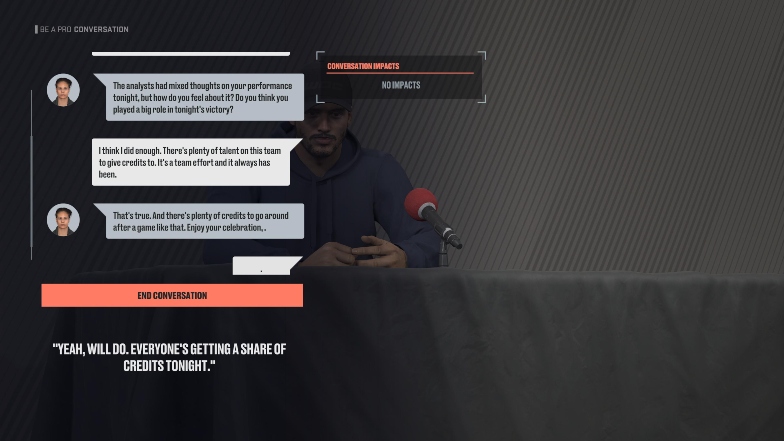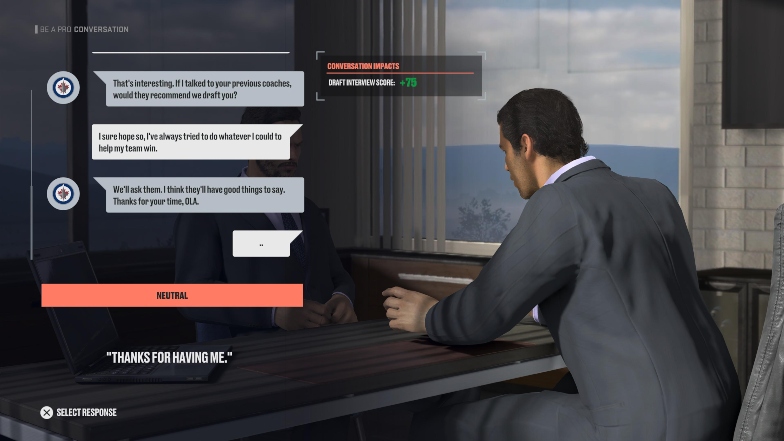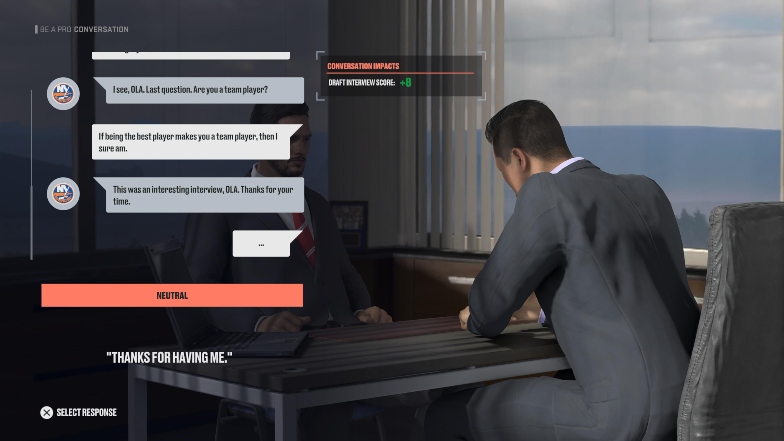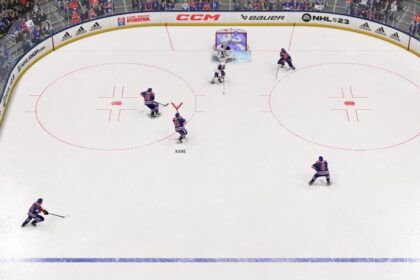There aren’t any prizes for being the number one draft pick in NHL 23 apart from bragging rights, but it’s natural to wonder how to achieve the feat in the first place.
In NHL 22, it was very easy to be drafted as a top 2 pick. All you had to do was put in okay performances and it would be pretty much guaranteed.
Since the game’s release, NHL 23’s Be A Pro mode has received a lot of flak from the community because it feels like the same experience from the previous year. However, one area where EA seems to have tweaked something is in the way the draft selection works.
Getting selected as a top 2 pick is not so straightforward anymore, talk less of getting the top spot. Now, you have to actually put in some effort, and a combination of factors comes into play.
In this guide, I have run tests across a couple of playthroughs to learn how to be the number one draft pick in NHL 23. Or at least, give your player the best chance of doing so.
Building Your Pro

Let’s start off with building the player. The factors that could potentially affect your draft position are the position you choose to play, and the archetype to go with it.
Bear in mind that these selections affect the objectives and challenges that you get from the coach before and during games.
If, for instance, you’re playing with a winger that is a Sniper, you will be judged based on your shooting and the coach will often challenge you to score a particular number of goals, take more shots, etc.
If you’re unequivocally decided about which position you want your player to operate in, it would still be worth learning the best archetypes in NHL 23 Be A Pro mode. However, if you’re open to recommendations, I would suggest choosing a winger or center.
In terms of the points that you earn from actions in-game, goals carry quite a bit of weight. So, it only makes sense that you build a player in a position where you can be heavily involved in scoring goals.
Now that earning that top draft spot is a bit tougher, you’re going to need all the points you can get.
Choosing Your Team and Tournament

As was the case in NHL 22, there are three possible starting points for you once you’ve built your pro. You may choose to start in Europe, the CHL’s Memorial Cup, or the NHL.
Obviously, if you want the relative “randomness” of the draft team selection process, then you shouldn’t choose to start in the NHL. You should only do that if you have already decided which team you want to play with and you don’t want anyone else.
On the other hand, there is more uncertainty in choosing the CHL’s Memorial Cup or Europe. You’re given a selection of teams to choose from, and your performances with this team over the course of the tournament will determine how the draft round will go.
For my tests, I went with the CHL’s Memorial Cup.
Conversations

Once you’ve chosen your preferred tournament and team, the main hub of the BAP mode takes center stage. Here, you can see all the information you need such as your bio, performances, skills, development, objectives, etc.
However, the first bits of interaction that you will have in this area will be with your agent. These conversations will be centered around how you’re feeling, and the likely position that you’ll get in the draft.
You will also have conversations with the media and the coach. The former usually want to discuss your performances and ask questions that affect your brand perception. The coach talks about your performances too, but he will also give you tips to improve and objectives/challenges to complete.
All these conversations have an impact on factors such as Management likability, Teammate Likability, and Brand Likeability.
They’re all pretty self-explanatory, but have little impact on your position in the draft at this stage of the game. However, you should still pay attention to the conversation choices you make, and I’ll explain why.
Manager likeability significantly affects your chances of getting into the first line; Teammate likability affects the behavior of teammates toward you on and off the ice (they’ll pass the puck less frequently if they don’t like you), and Brand likeability affects the types of endorsements you’re offered.
Growing Your Skill Tree

One other thing that you want to pay attention to straightaway is your skill tree. From the start, you get a couple of trait points to build your player in any area of your choice.
Those points will continue to accumulate the more you play games and complete objectives, but the immediate growth that the first two points offer – however slight – can give you a competitive advantage and help you perform better in the pre-draft tournament.
You can learn about the best traits in NHL 23 to decide which areas to focus on in the crucial early stages of your player’s development.
It is also important to spend these points wisely and not just invest in any random area that has no impact on the position that the player operates. A Sniper, for instance, would benefit in increases to shooting stats more than anything else, although speed boosts can be pretty useful too.
Growing your skill tree ahead of the draft is also important because you don’t want to get drafted into the NHL while your overall score is still very low. You will be competing against world-class skaters and your performances will suffer as a result.
It also just makes sense to get yourself into the best possible position overall-score-wise if you’re hoping to get drafted by the best teams in the league.
Game Performances

Now, this is the most important aspect of being the number one draft pick in NHL 23. As I suggested earlier on, you have to put in the performances to give yourself a good chance.
In the previous game, as a winger, you could get away with 2 goals and 2 assists in the pre-draft tournament and still get drafted number one, but that did not work here.
In my first playthrough, I could only manage the 51st overall pick, although I’ll admit my performances were sub-par. In my defense, I had no idea at the time that the system had changed!
To get drafted number one, I needed 10 goals and 2 assists over the course of the pre-draft games for an overall score of 12 points.
Obviously, the scoring system differs for players that occupy defensive or goalie positions, but the general idea is to get as many points as possible on board. It is the most important factor for getting the number one pick.
Pay close attention to the things that the coach tells you to do at all times, and keep an eye on those ratings to get an idea of how you’re doing during the game.
Winning the tournament is less important than your individual performances in the games. Don’t say that to the media or the coach though!
Interviews

When the tournament is completed, interested teams will begin to interview you.
At this point, you already have a pretty good idea if you’ll be number one if you speak to your agent just before the draft. He might drop a spoiler and tell you outright that you’re number one, or say there’s a good chance.
If you’re actually number one, then you’ll only be interviewed by two teams. If you absolutely don’t want to play for one of those teams, you can deliberately tank the interview and do well in the other one.

This does not guarantee that you still won’t get picked by the team you don’t want, but it increases the odds.
There are usually three options to choose from to answer questions in these interviews – “Team”, “Persuade”, and “Star”.
Team answers are best if you want to get a high score for an interview while “Star” answers are at the other end of the scale. “Persuade” answers offer a risk-reward situation that could go either way.
The “Draft interview Score” in the top right corner of the conversation shows you if it’s gone well or badly.
Final Words
Despite all the talk about how EA has just released a copy of the same game with a new playlist this year, it is pretty nice that the draft system is now a bit more realistic. The previous system of getting a top 2 pick in most cases was easier but not necessarily better.
Anyway, applying these tips on how to be the number one draft pick in NHL 23 appropriately is an effective way to get your Be A Pro game off to a good start and a promising career in the big boys’ league.
Good luck!






